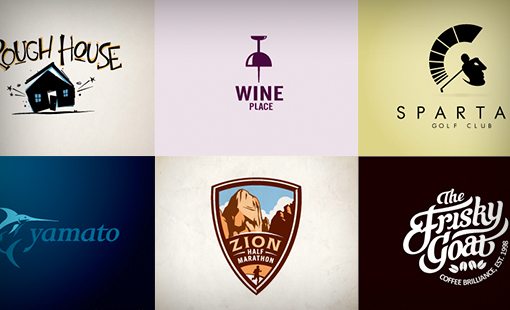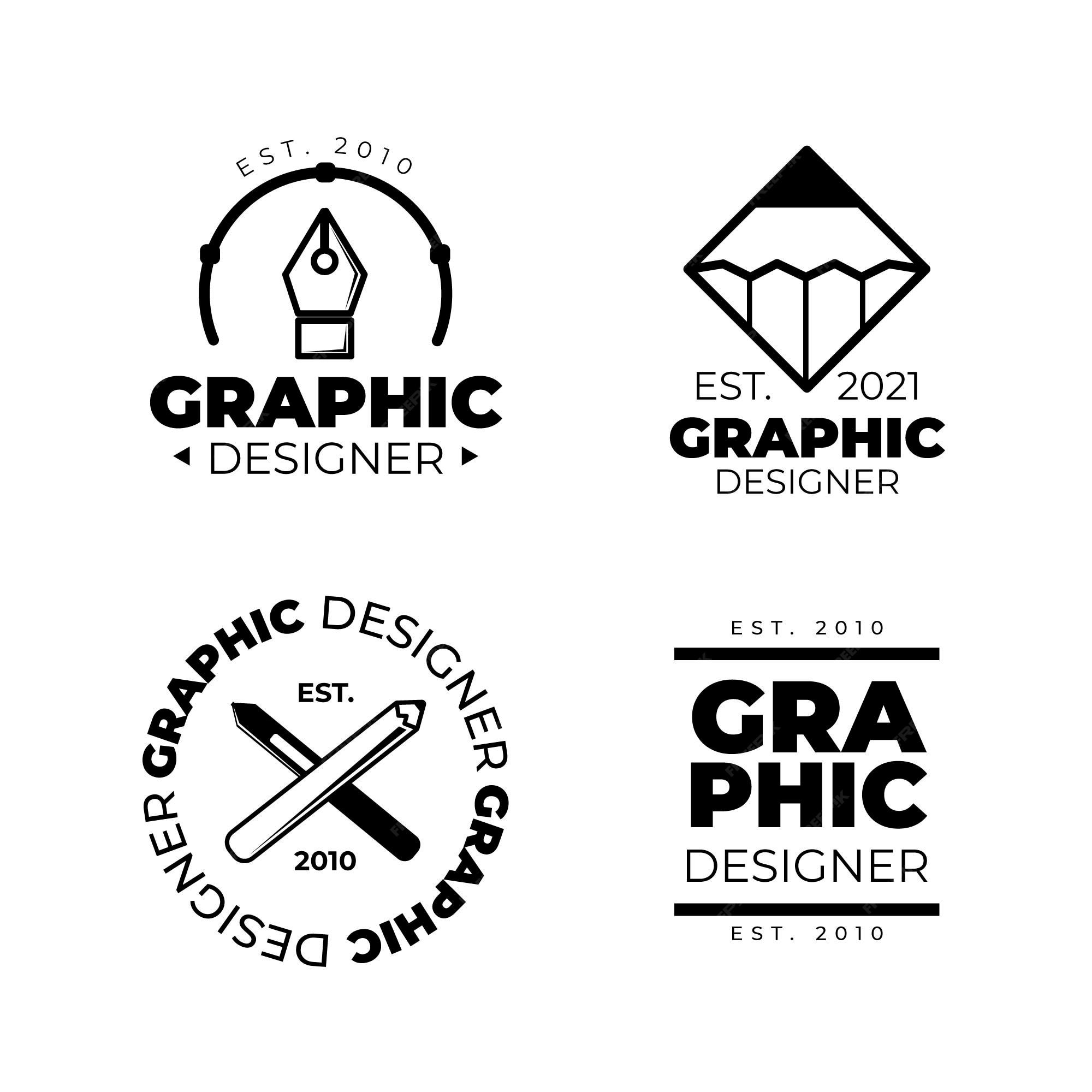Graphic design logos are specialized field within the larger umbrella of graphic design that focuses on creating unique and impactful visual identities for brands and businesses. The logo is often the first point of contact between a brand and its customers, making it a crucial element in any company’s marketing efforts. In this article, we’ll explore the art of graphic logo design and the key elements that go into creating a successful logo.
What is a Logo?
Graphic design logos are visual symbols or marks that represents a brand or company. It can be an icon, a typographic element, or a combination of both. A well-designed logo should be simple, memorable, versatile, and reflective of the brand’s values and personality. A good logo can help a company stand out from the competition, build brand recognition, and establish credibility.
Elements of Logo Design
Creating successful Graphic design logos requires a combination of creativity, skill, and knowledge of design principles. Here are some of the key elements that go into designing an effective logo:
- Color – Color is a powerful tool in logo design. Different colors can convey different emotions and meanings, and can help a logo stand out in a crowded market. For example, red can signify passion, energy, and excitement, while blue can represent trust, stability, and professionalism.
- Typography – The choice of typography is another crucial element in logo design. The font used in a logo can convey a brand’s personality, whether it is modern, classic, playful, or serious. It is essential to choose a font that is legible and scalable, so it looks good at different sizes.
- Shape – The shape of a logo can also affect how it is perceived. A logo with sharp angles and straight lines can convey a sense of strength and stability, while a logo with curved lines can feel more playful and friendly. The shape of a logo can also help it stand out from the competition.
- Symbolism – Many logos use symbols or icons to represent the brand visually. A well-designed symbol can make a logo more memorable and instantly recognizable. It’s important to choose a symbol that is unique, relevant to the brand, and easily identifiable.
- Negative Space – Negative space refers to the space around and between the elements in a logo. Using negative space creatively can make a logo more interesting and memorable. For example, the FedEx logo uses negative space to create an arrow between the “E” and “x,” which symbolizes speed and efficiency.
Process of graphic design logos
The process of creating a logo involves several stages, including research, brainstorming, sketching, refining, and finalizing. Here is a general overview of the logo design process:
- Research – The designer should start by researching the brand and its competitors to get a sense of the market and the target audience. They should also identify the brand’s values and personality, which will guide the design process.
- Brainstorming – The designer should then generate ideas and concepts for the logo, considering the key elements discussed earlier, such as color, typography, shape, symbolism, and negative space. This stage is about exploring different options and possibilities.
- Sketching – Once the designer has some ideas, they should start sketching rough concepts by hand. This stage allows the designer to quickly experiment with different shapes and layouts without getting bogged down in details.
- Refining – After selecting a few promising concepts, the designer should refine them digitally, adding color, typography, and other details. This stage involves a lot of back-and-forth between the designer and the client, as they fine-tune the logo to meet the brand’s needs.
- Finalizing – Once the client approves the final design, the designer should prepare the logo files for various formats and applications, such as print, digital, and social media.
What is graphic logo design?
 Graphic logo design is the process of creating a visual symbol or icon that represents a brand or business. The goal of a logo is to create a recognizable and memorable symbol that can be easily associated with a company or product.
Graphic logo design is the process of creating a visual symbol or icon that represents a brand or business. The goal of a logo is to create a recognizable and memorable symbol that can be easily associated with a company or product.
Graphic logo design typically involves the use of typography, colors, shapes, and images to create a unique visual representation of a brand. A well-designed logo should be simple, easily identifiable, and relevant to the company it represents.
Graphic logo designers use a variety of tools and techniques to create logos, including computer software, drawing and sketching, and research on industry trends and competitor logos. The final product is a digital file that can be used across a variety of mediums, such as print, digital marketing, and signage.
When did graphic design become popular
Graphic design has its roots in the early 20th century, but it began to gain popularity and recognition as a profession in the 1950s and 1960s, particularly in the United States and Europe. During this time, there was a growing demand for advertising and marketing materials, as well as a need for effective communication in industries such as publishing and film.
The emergence of new technologies, such as offset printing and photolithography, also played a significant role in the development of graphic design as a profession. These technologies allowed designers to create high-quality prints and images that could be reproduced at a large scale.
In the 1960s and 1970s, the field of graphic design continued to grow and evolve, with the introduction of computer-aided design (CAD) tools in the 1980s and the emergence of digital design in the 1990s. Today, graphic design is a crucial part of many industries, from advertising and marketing to product design and user experience design.
How to make graphic logo design
 Making graphic design logos can be a fun and rewarding process. Here are some steps to follow:
Making graphic design logos can be a fun and rewarding process. Here are some steps to follow:
- Define the brand: Before starting the design process, it’s important to have a clear understanding of the brand’s personality, values, and target audience. This will help you create a logo that effectively communicates the brand’s identity.
- Research and gather inspiration: Look at other logos in the same industry or related fields to gather inspiration. Analyze what works well and what doesn’t, and take notes on color palettes, typography, and imagery.
- Sketch out ideas: Start sketching out rough ideas for the logo on paper. Don’t worry about making it perfect yet, just focus on getting your ideas down on paper.
- Refine and digitize: Once you have some rough ideas, start refining them digitally using a vector graphics program like Adobe Illustrator or Sketch. Play around with different colors, fonts, and layouts until you find something that works well.
- Test and iterate: Once you have a few potential designs, test them out by showing them to people in your target audience and getting feedback. Use this feedback to iterate and refine the design until it’s perfect.
- Finalize and deliver: Once the design is finalized, deliver it to the client in the appropriate file formats (e.g. PNG, SVG, EPS) and with any necessary brand guidelines.
What is graphic logo design?
Graphic logo design is the process of creating a visual representation or symbol that represents a brand, company, product, or service. A well-designed logo can effectively communicate the essence and values of a brand, and create a memorable impression in the minds of consumers.
Graphic logo design involves various elements such as typography, color theory, composition, and visual hierarchy. The designer must carefully consider these elements to create a logo that is visually appealing, easily recognizable, and reflects the brand’s identity.
Graphic logo design can be used across various mediums such as websites, social media platforms, packaging, advertising, and merchandise. A successful logo design can help build brand awareness and loyalty, and differentiate a brand from its competitors.
Do graphic designers make logos?
Yes, graphic designers often make logos as it is one of the core responsibilities of a graphic designer. Logo design requires creativity, visual communication skills, and an understanding of branding principles. Many graphic designers specialize in logo design and have a strong portfolio of logos they have created for different clients. However, not all graphic designers may have expertise in logo design, and some may focus on other areas such as web design, user interface design, or print design.
Where do graphic designers get their fonts?
 Graphic designers can obtain fonts from various sources, including:
Graphic designers can obtain fonts from various sources, including:
- Font foundries: These are companies that specialize in creating and distributing fonts. Examples include Adobe Fonts, Hoefler&Co, and Monotype.
- Online marketplaces: Designers can purchase fonts from websites such as MyFonts, FontShop, and Creative Market.
- Free font websites: Some websites offer free fonts that can be downloaded and used for personal or commercial projects. Examples include Google Fonts, Font Squirrel, and DaFont.
- Operating systems: Most operating systems come with a set of pre-installed fonts that designers can use.
- Custom font design: Designers can also create their own custom fonts using software like Adobe Illustrator, FontLab, or Glyphs.
It is important for designers to ensure that they have the proper licensing for any fonts they use, especially if they are using them for commercial purposes.
FAQs: Answering Your Queries
Q: What makes a logo effective? A: Effectiveness lies in simplicity, versatility, and the ability to convey the brand’s essence in a memorable way.
Q: How important is color in logo design? A: Color plays a crucial role in evoking emotions and creating brand associations. Choosing the right colors is paramount.
Q: Can I design a logo without graphic design experience? A: Absolutely! With the right guidance and tools, anyone can create a compelling logo. Start with understanding the basics of design principles.
Q: Should I follow design trends for my logo? A: While staying aware of trends is beneficial, focus on creating a timeless design that reflects the brand’s identity consistently.
Q: What role does typography play in logo design? A: Typography is the visual language of a logo. The right typeface communicates the brand’s personality and values effectively.
Q: How do I ensure my logo is unique? A: Conduct thorough research to avoid similarities with existing logos. Incorporate elements that distinctly represent the brand.
Conclusion
Embarking on the journey of Graphic design logos is a thrilling and rewarding endeavor. Armed with insights into color psychology, typography, and the creative process, you’re now equipped to craft logos that leave a lasting impression. Strive for a perfect blend of trendiness and timelessness, and watch your designs become iconic.


![How To Become a Graphic Designer [2023 Career Guide]](https://www.springboard.com/blog/wp-content/uploads/2023/02/how-to-become-a-graphic-designer-2023-career-guide.jpeg)
